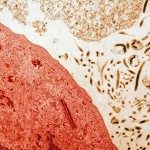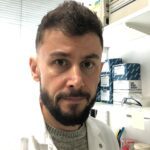Link to Pubmed [PMID] – 26735992
N. Engl. J. Med. 2016 Jan;374(1):33-42
BACKGROUND: In the wake of the recent outbreak of Ebola virus disease (EVD) in several African countries, the World Health Organization prioritized the evaluation of treatment with convalescent plasma derived from patients who have recovered from the disease. We evaluated the safety and efficacy of convalescent plasma for the treatment of EVD in Guinea.
METHODS: In this nonrandomized, comparative study, 99 patients of various ages (including pregnant women) with confirmed EVD received two consecutive transfusions of 200 to 250 ml of ABO-compatible convalescent plasma, with each unit of plasma obtained from a separate convalescent donor. The transfusions were initiated on the day of diagnosis or up to 2 days later. The level of neutralizing antibodies against Ebola virus in the plasma was unknown at the time of administration. The control group was 418 patients who had been treated at the same center during the previous 5 months. The primary outcome was the risk of death during the period from 3 to 16 days after diagnosis with adjustments for age and the baseline cycle-threshold value on polymerase-chain-reaction assay; patients who had died before day 3 were excluded. The clinically important difference was defined as an absolute reduction in mortality of 20 percentage points in the convalescent-plasma group as compared with the control group.
RESULTS: A total of 84 patients who were treated with plasma were included in the primary analysis. At baseline, the convalescent-plasma group had slightly higher cycle-threshold values and a shorter duration of symptoms than did the control group, along with a higher frequency of eye redness and difficulty in swallowing. From day 3 to day 16 after diagnosis, the risk of death was 31% in the convalescent-plasma group and 38% in the control group (risk difference, -7 percentage points; 95% confidence interval [CI], -18 to 4). The difference was reduced after adjustment for age and cycle-threshold value (adjusted risk difference, -3 percentage points; 95% CI, -13 to 8). No serious adverse reactions associated with the use of convalescent plasma were observed.
CONCLUSIONS: The transfusion of up to 500 ml of convalescent plasma with unknown levels of neutralizing antibodies in 84 patients with confirmed EVD was not associated with a significant improvement in survival. (Funded by the European Union’s Horizon 2020 Research and Innovation Program and others; ClinicalTrials.gov number, NCT02342171.).

